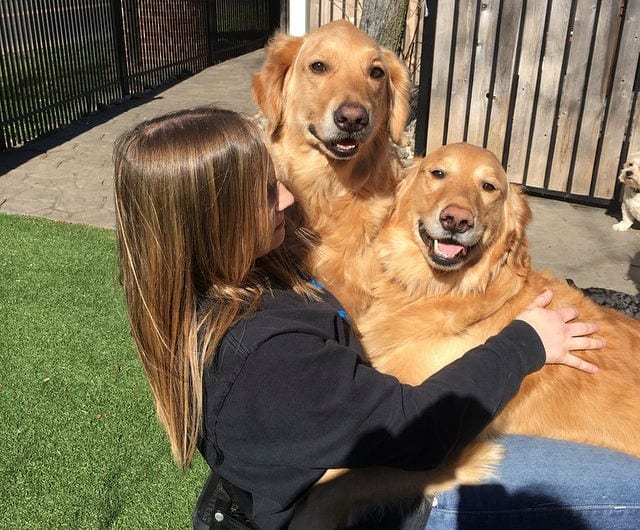Maybe you’ve known a dog that’s very protective of their human. Maybe a little too protective for your taste. All you hope to do is approach a fellow human who has a dog in her lap, and suddenly that dog is all, “Get the pup out of here! Go away! My hooman! Mine!”
Maybe this dog is your own?


A lot of folks call this “lap agression,” but it may be more technically called Canine Possession Aggression (CPA) or “resource guarding.” The terms are usually used to describe a dog’s aggressive behavior while guarding a cherished toy or treat. Or you?


In your dog’s head, you are a very good resource. You provide treats, toys, meals (and your love!) and they don’t want it taken away—whether they’re just chilling in your lap or you’re holding them in your arms.
[bp_related_article]
According to Positively, a training site founded by Victoria Stillwell, one of the world’s most-respected dog trainers, “the threat of losing the resource and good feeling that the resource provides make a dog more vigilant, angry and irritable.”


But why does your dog see the need to protect you while on your lap from your friends and family? Well, it may be a sense of insecurity or the inability to handle certain social situations – like sitting on your lap when someone, or some cathole, gets too close.


Resource guarding can be stimulated by a few conditions: sudden movements, someone getting up abruptly, a person or dog getting too close to you. Or your dog being unable to identify what exactly the threat is. For some reason, your dog thinks you are vulnerable and therefore need protecting.


For your safety and others, recognize the signs of stress and discomfort that indicate a potential for aggressive behavior and understand why your dog is feeling this way:


Even though your dog is just trying to protect what’s theirs, it can make having people over or going out in public stressful. Talk to your veterinarian to determine if they behave this way due to a medical condition. Also find a professional behavior expert such as a Certified Applied Animal Behaviorist (CAAB or ACAAB), a veterinary behaviorist (Dip ACVB) or a Certified Professional Dog Trainer (CPDT) in your area.
Remember you’re not alone and there are options. And your dog is only following their instincts because they love you.






